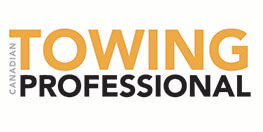Canada’s insights for IBIS Global Focus report
Story by ALLISON ROGERS
As the Canadian media partners of the International Bodyshop Industry Symposium (IBIS), Collision Repair magazine was once again asked to provide a Canadian perspective on the industry.
The IBIS Global Focus Report brings market intelligence from its industry parnters, gathering data insights and anecdotal evidence from its media partners across the globe. The last IBIS Global Focus report was published in 2020. You can find Collision Repair’s answers on the following pages.
What is the current state of play in your domestic repair sector and the supply chain? Since Canadian COVID restrictions continued well into 2022, the industry faced longstanding effects of stay-at-home orders. Collision repair was deemed an essential service and disruption to general operations were limited, though kilometres driven decreased significantly. Parts inflation and higher repair costs—from vehicle repair complexity—have allowed for increased sales, though profitability remains a concern.
Repair times remain a major issue, with some facilities booking repairs up to six months ahead; although improvements are being made in 2024. Material cost increases and worries concerning supply chain and timely parts deliveries persist due to ongoing tensions in the Red Sea. What are the three biggest worries for bodyshop owners and managers in your market?
TRAINING
Vehicle complexity has raised training accessibility and cost concerns for facilities. Canada now has its first dedicated OEM training facility, in collaboration with Volkswagen Group Canada and the Canadian Welding Bureau, near Toronto, Ontario. The facility offers its space and equipment in a welding certification program in partnership with AIA Canada. Additionally, 3M’s Skills Development Centre in St. Paul, Minnesota, is accessible to Canadian professionals seeking collision repair training, among other programs and opportunities.
STAFFING/SKILLS SHORTAGE
Recruitment, retention, and the skills shortage continue to pose challenges in the repair industry. According to a report by AIA Canada, 65 percent of mechanical and collision shop owners saw an increase in technician turnover in 2023, with nearly half of the technicians leaving for higher-paying jobs. AIA Canada also noted 13 percent of those who left the repair sector transitioned to construction, where they earned an average weekly income of around CAD$1,483, compared to approximately CAD$983 per week in auto repair and maintenance.
PROFITABILITY CONCERNS
Due to repair complexity and other factors, the issue of collision centre profitability has been acutely raised in recent months. This extends to concerns regarding repair versus replace; insurance adjusters tend to opt for repair, where collision centres are keen to follow OEM guidelines and not repair certain parts due to ADAS concerns, among others.
Has support for bodyshops from the OEMs, insurers and other work providers improved/ worsened over the past year?
Relationships and tensions between collision centre partners and shops are a heavily discussed topic. The Right to Repair bill to allow facilities access to OEM information, as well as customers the right to choose a repair centre, is still processing through the Canadian House of Commons.
The insurance landscape has largely remained the same, with conversations circulating on how to approach claims processing in a way that highlights the extreme complexity of the modern car.
How are bodyshops in your market attracting new talent? And what more can the sector do to bridge the skills gap?
Canadian collision businesses employ grassroots strategies to attract new talent, focusing on strong local reputations, high school recruitment, job fair participation, and hosting community events. They also establish partnerships with vocational colleges and skills organizations to access emerging talent. Increasing labor rates to address the skills shortage is a widely discussed solution, as nearly half of technicians who left the trade in 2023 sought higher-paying positions. The industry recognizes technological advancement, aiming to promote the complexity and appeal of working on modern vehicles to enhance interest among youth.
What industry trends (positive or negative) are on the horizon this year?
Calibration and ADAS capabilities, whether in-house or outsourced, are a priority for many shops. Electric vehicle repair is also a pressing issue, with Canadian EV repairable claims frequencies increasing by 40 percent in 2023. Collision centres are actively seeking training and information to ensure safety and profitability during the shift to EVs.
Insurance providers are adopting more telematic and technology-based features to automate processes, while collision centres aim to optimize operations through automation and specialized tools.
Profitability remains a key topic of discussion among collision centres nationwide.

The post FOR WORLDWIDE CONSIDERATION appeared first on Collision Repair Magazine.














